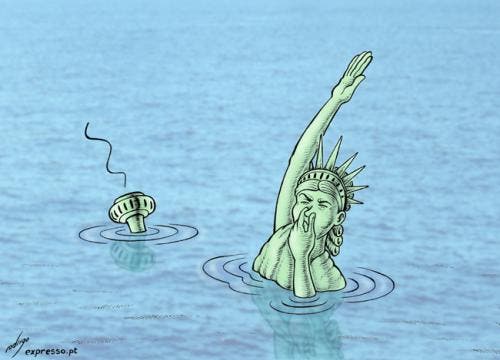It is no longer a question if multi-meter sea level rises will happen, but only of when. According to the latest estimate from the Arctic Monitoring and Assessment Programme it seems the accelerated climate change in the Arctic including a thaw of Greenland’s ice could raise world sea levels by up to 1.6 meters by 2100.
“The past six years (until 2010) have been the warmest period ever recorded in the Arctic,” according to the Oslo-based Arctic Monitoring and Assessment Programme (AMAP), which is backed by the eight-nation Arctic Council.
“In the future, global sea level is projected to rise by 0.9 meters (2ft 11in) to 1.6 meters (5ft 3in) by 2100 and the loss of ice from Arctic glaciers, ice caps and the Greenland ice sheet will make a substantial contribution,” it said. The rises were projected from 1990 levels.
“Arctic glaciers, ice caps and the Greenland ice sheet contributed over 40 percent of the global sea level rise of around 3 mm per year observed between 2003 and 2008,” it said.
Back in 2007 the United Nations’ Intergovernmental Panel on Climate Change (IPCC) reported that they estimate an increase of sea levels between 18 and 59 cm by 2100, however these conservative numbers did not take in consideration the drastic acceleration of thaw in the arctic.
“It is worrying that the most recent science points to much higher sea level rise than we have been expecting until now,” European Climate Commissioner Connie Hedegaard told Reuters.
“The study is yet another reminder of how pressing it has become to tackle climate change, although this urgency is not always evident neither in the public debate nor from the pace in the international negotiations,” she said.
The UN is currently in entangling talks on how they can battle the increase in temperature and sea levels, but progress is sluggish described at best. But the climate doesn’t wait, actually it’s said the Arctic Ocean could be nearly ice free in summers within 30 to 40 years, earlier than projected by the IPCC.
RELATED: Soot responsible for rapid Arctic melting?
As reflective ice and snow shrink, ever bigger areas of darker water or soil get exposed filled with black carbon or soot. Those dark regions are extremely dangerous for the polar caps, as they soak up ever more heat from the sun, in turn stoking a melt of the remaining ice and snow.
“There is evidence that two components of the Arctic cryosphere — snow and sea ice — are interacting with the climate system to accelerate warming,” th IPCC said.
The AMAP report was due for release on Wednesday but AMAP officials released it a day early after advance media leaks.



